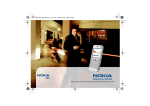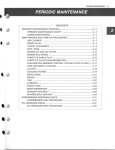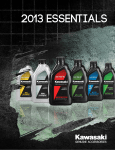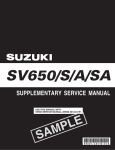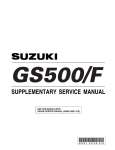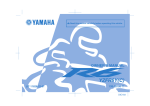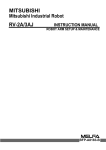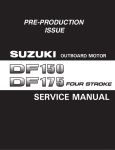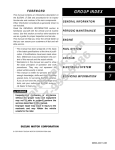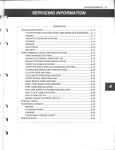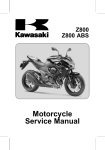Download Suzuki DL1000 K2 Service Manual
Transcript
DL1000 FOREWORD This manual contains an introductory description on the SUZUKI DL1000 and procedures for its inspection/service and overhaul of its main components. Other information considered as generally known is not included. Read the GENERAL INFORMATION section to familiarize yourself with the motorcycle and its maintenance. Use this section as well as other sections to use as a guide for proper inspection and service. This manual will help you know the motorcycle better so that you can assure your customers of fast and reliable service. * This manual has been prepared on the basis of the latest specifications at the time of publication. If modifications have been made since then, differences may exist between the content of this manual and the actual motorcycle. * Illustrations in this manual are used to show the basic principles of operation and work procedures. They may not represent the actual motorcycle exactly in detail. * This manual is written for persons who have enough knowledge, skills and tools, including special tools, for servicing SUZUKI motorcycles. If you do not have the proper knowledge and tools, ask your authorized SUZUKI motorcycle dealer to help you. ! Inexperienced mechanics or mechanics without the proper tools and equipment may not be able to properly perform the services described in this manual. Improper repair may result in injury to the mechanic and may render the motorcycle unsafe for the rider and passenger. © COPYRIGHT SUZUKI MOTOR CORPORATION 2002 GROUP INDEX GENERAL INFORMATION 1 PERIODIC MAINTENANCE 2 ENGINE 3 FI SYSTEM 4 COOLING AND LUBRICATION SYSTEM 5 CHASSIS 6 ELECTRICAL SYSTEM 7 SERVICING INFORMATION 8 EMISSION CONTROL INFORMATION 9 WIRING DIAGRAM 10 HOW TO USE THIS MANUAL TO LOCATE WHAT YOU ARE LOOKING FOR: 1. The text of this manual is divided into sections. 2. The section titles are listed in the GROUP INDEX. 3. Holding the manual as shown at the right will allow you to find the first page of the section easily. 4. The contents are listed on the first page of each section to help you find the item and page you need. COMPONENT PARTS AND WORK TO BE DONE Under the name of each system or unit, is its exploded view. Work instructions and other service information such as the tightening torque, lubricating points and locking agent points, are provided. Example: Front wheel 1 Brake disc 2 Dust seal 3 Bearing 4 Center spacer 5 Coller 6 Front wheel 7 Tire valve A Front axle B Brake disc bolt @ ITEM A B N·m kgf-m lb-ft 100 10.0 72.5 23 2.3 16.5 SYMBOL Listed in the table below are the symbols indicating instructions and other information necessary for servicing. The meaning of each symbol is also included in the table. SYMBOL DEFINITION SYMBOL DEFINITION Torque control required. Data beside it indicates specified torque. Apply THREAD LOCK SUPER “1360”. 99000-32130 Apply oil. Use engine oil unless otherwise specified. Use engine coolant. 99000-99032-11X Apply molybdenum oil solution. (Mixture of engine oil and SUZUKl MOLY PASTE in a ratio of 1 : 1) Use fork oil. 99000-99001-SS8 Apply SUZUKI SUPER GREASE “A”. 99000-25010 Apply or use brake fluid. Apply SUZUKI MOLY PASTE. 99000-25140 Measure in voltage range. Apply SUZUKI BOND “1207B” 99000-31140 Measure in current range. Apply SUZUKI BOND “1215”. 99000-31110 Measure in diode test range. Apply THREAD LOCK SUPER “1303”. 99000-32030 Measure in continuity test range. Apply THREAD LOCK SUPER “1322”. 99000-32110 Use special tool. Apply THREAD LOCK “1342”. 99000-32050 Indication of service data. ABBREVIATIONS USED IN THIS MANUAL E A ECM : Engine Control Module Engine Control Unit (ECU) (FI Control Unit) ECT Sensor : Engine Coolant Temperature Sensor (ECTS), Water Temp. Sensor (WTS) EVAP : Evaporative Emission EVAP Canister : Evaporative Emission Canister (Canister) ABDC : After Bottom Dead Center AC : Alternating Current ACL : Air Cleaner, Air Cleaner Box API : American Petroleum Institute ATDC : After Top Dead Center ATM Pressure: Atmospheric Pressure Atmospheric Pressure Sensor (APS) A/F : Air Fuel Mixture F B BBDC BTDC B+ FI FP FPR FP Relay : Before Bottom Dead Center : Before Top Dead Center : Battery Positive Voltage : Fuel Injection, Fuel Injector : Fuel Pump : Fuel Pressure Regulator : Fuel Pump Relay C CKP Sensor : Crankshaft Position Sensor (CKPS) CKT : Circuit CLP Switch : Clutch Lever Position Switch (Clutch Switch) CMP Sensor : Camshaft Position Sensor (CMPS) CO : Carbon Monoxide CPU : Central Processing Unit D DC DMC DOHC DRL : Direct Current : Dealer Mode Coupler : Double Over Head Camshaft : Daytime Running Light G GEN GND GP Switch : Generator : Ground : Gear Position Switch H HC : Hydrocarbons IAP Sensor IAT Sensor : Intake Air Pressure Sensor (IAPS) : Intake Air Temperature Sensor (IATS) : Ignition I IG L LCD LED LH : Liquid Crystal Display : Light Emitting Diode (Malfunction Indicator Lamp) : Left Hand M MAL-Code Max MIL Min : Malfunction Code (Diagnostic Code) : Maximum : Malfunction Indicator Lamp (LED) : Minimum N NOx : Nitrogen Oxides O OHC OPS : Over Head Camshaft : Oil Pressure Switch P PCV : Positive Crankcase Ventilation (Crankcase Breather) R RH ROM : Right Hand : Read Only Memory S SAE : Society of Automotive Engineers STC System : Secondary Throttle Control System (STCS) STP Sensor : Secondary Throttle Position Sensor (STPS) ST Valve : Secondary Throttle Valve (STV) STV Actuator : Secondary Throttle Valve Actuator (STVA) T TO Sensor TP Sensor : Tip Over Sensor (TOS) : Throttle Position Sensor (TPS) V VD : Vacuum Damper GENERAL INFORMATION 1-1 GENERAL INFORMATION 1 CONTENTS WARNING/CAUTION/NOTE ...............................................................1- 2 GENERAL PRECAUTIONS ................................................................1- 2 SUZUKI DL1000K2 (’02-MODEL) ......................................................1- 4 SERIAL NUMBER LOCATION ...........................................................1- 4 FUEL, OIL AND ENGINE COOLANT RECOMMENDATION .............1- 4 FUEL ............................................................................................1- 4 ENGINE OIL .................................................................................1- 5 BRAKE FLUID .............................................................................1- 5 FRONT FORK OIL .......................................................................1- 5 ENGINE COOLANT .....................................................................1- 5 WATER FOR MIXING ..................................................................1- 5 ANTI-FREEZE/ENGINE COOLANT ............................................1- 5 LIQUID AMOUNT OF WATER/ENGINE COOLANT ...................1- 5 BREAK-lN PROCEDURES .................................................................1- 6 CYLINDER IDENTIFICATION ............................................................1- 6 INFORMATION LABELS ....................................................................1- 7 SPECIFICATIONS ..............................................................................1- 8 COUNTRY AND AREA CODES .........................................................1-10 1-2 GENERAL INFORMATION WARNING/CAUTION/NOTE Please read this manual and follow its instructions carefully. To emphasize special information, the symbol and the words WARNING, CAUTION and NOTE have special meanings. Pay special attention to the messages highlighted by these signal words. ! Indicates a potential hazard that could result in death or injury. " Indicates a potential hazard that could result in motorcycle damage. NOTE: Indicates special information to make maintenance easier or instructions clearer. Please note, however, that the warnings and cautions contained in this manual cannot possibly cover all potential hazards relating to the servicing, or lack of servicing, of the motorcycle. In addition to the WARNINGS and CAUTIONS stated, you must use good judgement and basic mechanical safety principles. If you are unsure about how to perform a particular service operation, ask a more experienced mechanic for advice. GENERAL PRECAUTIONS ! * Proper service and repair procedures are important for the safety of the service mechanic and the safety and reliability of the motorcycle. * When 2 or more persons work together, pay attention to the safety of each other. * When it is necessary to run the engine indoors, make sure that exhaust gas is forced outdoors. * When working with toxic or flammable materials, make sure that the area you work in is wellventilated and that you follow all of the material manufacturer’s instructions. * Never use gasoline as a cleaning solvent. * To avoid getting burned, do not touch the engine, engine oil, radiator and exhaust system until they have cooled. * After servicing the fuel, oil, water, exhaust or brake systems, check all lines and fittings related to the system for leaks. GENERAL INFORMATION " * If parts replacement is necessary, replace the parts with Suzuki Genuine Parts or their equivalent. * When removing parts that are to be reused, keep them arranged in an orderly manner so that they may be reinstalled in the proper order and orientation. * Be sure to use special tools when instructed. * Make sure that all parts used in reassembly are clean. Lubricate them when specified. * Use the specified lubricant, bond, or sealant. * When removing the battery, disconnect the negative cable first and then the positive cable. * When reconnecting the battery, connect the positive cable first and then the negative cable, and replace the terminal cover on the positive terminal. * When performing service to electrical parts, if the service procedures not require use of battery power, disconnect the negative cable the battery. * When tightening the cylinder head and case bolts and nuts, tighten the larger sizes first. Always tighten the bolts and nuts diagonally from the inside toward outside and to the specified tightening torque. * Whenever you remove oil seals, gaskets, packing, O-rings, locking washers, self-locking nuts, cotter pins, circlips and certain other parts as specified, be sure to replace them with new ones. Also, before installing these new parts, be sure to remove any left over material from the mating surfaces. * Never reuse a circlip. When installing a new circlip, take care not to expand the end gap larger than required to slip the circlip over the shaft. After installing a circlip, always ensure that it is completely seated in its groove and securely fitted. * Use a torque wrench to tighten fasteners to the specified torque. Wipe off grease and oil if a thread is smeared with them. * After reassembling, check parts for tightness and proper operation. * To protect the environment, do not unlawfully dispose of used motor oil, engine coolant and other fluids: batteries, and tires. * To protect Earth’s natural resources, properly dispose of used motorcycle and parts. 1-3 1-4 GENERAL INFORMATION SUZUKI DL1000K2 (’02-MODEL) RIGHT SIDE LEFT SIDE * Difference between photographs and actual motorcycles depends on the markets. SERIAL NUMBER LOCATION The frame serial number or V.I.N. (Vehicle Identification Number) 1 is stamped on the right side of the steering head pipe. The engine serial number 2 is located on the right side of the crankcase. These numbers are required especially for registering the machine and ordering spare parts. FUEL, OIL AND ENGINE COOLANT RECOMMENDATION FUEL (FOR CANADIAN MODEL) Use only unleaded gasoline of at least 87 pump octane ( R + M ) or 91 octane or higher rated by the research 2 method. Gasoline containing MTBE (Methyl Tertiary Butyl Ether), less than 10% ethanol, or less than 5% methanol with appropriate cosolvents and corrosion inhibitor is permissible. FUEL (FOR OTHER COUNTRIES) Gasoline used should be graded 91 octane (Research Method) or higher. Unleaded gasoline is recommended. GENERAL INFORMATION 1-5 ENGINE OIL Use a premium quality 4-stroke motor oil to ensure longer service life of your motorcycle. Use only oils which are rated SF or SG under the API service classification. The recommended viscosity is SAE 10W-40. If an SAE 10W-40 motor oil is not available, select an alternative according to the following chart. BRAKE FLUID Specification and classification: DOT 4 ! Since the brake system of this motorcycle is filled with a glycol-based brake fluid by the manufacturer, do not use or mix different types of fluid such as silicone-based and petroleum-based fluid for refilling the system, otherwise serious damage will result. Do not use any brake fluid taken from old or used or unsealed containers. Never re-use brake fluid left over from a previous servicing, which has been stored for a long period. FRONT FORK OIL Use fork oil SS8 or an equivalent fork oil. ENGINE COOLANT Use an anti-freeze/engine coolant compatible with an aluminum radiator, mixed with distilled water only. WATER FOR MIXING Use distilled water only. Water other than distilled water can corrode and clog the aluminum radiator. ANTI-FREEZE/ENGINE COOLANT The engine coolant perform as a corrosion and rust inhibitor as well as anti-freeze. Therefore, the engine coolant should be used at all times even though the atmospheric temperature in your area does not go down to freezing point. Suzuki recommends the use of SUZUKI COOLANT anti-freeze/engine coolant. If this is not available, use an equivalent which is compatible with an aluminum radiator. LIQUID AMOUNT OF WATER/ENGINE COOLANT Solution capacity (total): 2 200 ml (2.3/1.9 US/Imp qt) For engine coolant mixture information, refer to cooling system section, page 5-2. " Mixing of anti-freeze/engine coolant should be limited to 60%. Mixing beyond it would reduce its efficiency. If the anti-freeze/engine coolant mixing ratio is below 50%, rust inhabiting performance is greatly reduced. Be sure to mix it above 50% even though the atmospheric temperature does not go down to the freezing point. 1-6 GENERAL INFORMATION BREAK-lN PROCEDURES During manufacture only the best possible materials are used and all machined parts are finished to a very high standard but it is still necessary to allow the moving parts to “BREAK-IN” before subjecting the engine to maximum stresses. The future performance and reliability of the engine depends on the care and restraint exercised during its early life. The general rules are as follows. • Keep to these break-in engine speed limits: Initial 800 km ( 500 miles): Below 4 500 r/min Up to 1 600 km (1 000 miles): Below 7 000 r/min Over 1 600 km (1 000 miles): Below 9 500 r/min • Upon reaching an odometer reading of 1 600 km (1 000 miles) you can subject the motorcycle to full throttle operation. However, do not exceed 9 500 r/min at any time. CYLINDER IDENTIFICATION The two cylinders of this engine are identified as No.1 and No.2 cylinder, as counted from front to rear (as viewed by the rider on the seat). #2 #1 GENERAL INFORMATION INFORMATION LABELS 1 2 3 4 5 6 7 8 9 0 A B C D Noise label (For E-03, 24, 33) Information label (For E-03, 28, 33) ICES Canada label (For E-28) Vacuum hose routing label (For E-33) Fuel caution label (For E-02, 24) Manual notice label (For E-03, 33) Tire pressure label Warning safety label Rear carrier warning label Frame caution label Steering warning label Screen warning label ID label (For E-02, 19, 24) Safety label (For E-03, 28, 33) For E-28 (French) For E-28 These labels are attached on the right frame. 1-7 1-8 GENERAL INFORMATION SPECIFICATIONS DIMENSIONS AND DRY MASS Overall length.......................................................2 295 mm (90.4 in) Overall width ........................................................ 865 mm (34.1 in) Overall height.......................................................1 335 mm (52.6 in) Wheelbase ...........................................................1 535 mm (60.4 in) Ground clearance ................................................ 165 mm ( 6.5 in) Seat height........................................................... 840 mm (33.1 in) Dry mass.............................................................. 207 kg (456 lbs) 209 kg (461 lbs) .........E-33 ENGINE Type .....................................................................Four-stroke, Liquid-cooled, DOHC, 90-degree V-twin Number of cylinders .............................................2 Bore .....................................................................98.0 mm (3.858 in) Stroke...................................................................66.0 mm (2.598 in) Piston displacement.............................................996 cm³ (60.8 cu. in) Compression ratio................................................11.3 : 1 Fuel system..........................................................Fuel injection system Air cleaner............................................................Non-woven fabric element Starter system......................................................Electric starter Lubrication system ...............................................Wet sump DRIVE TRAIN Clutch...................................................................Wet multi-plate type Transmission........................................................6-speed constant mesh Gearshift pattern ..................................................1-down, 5-up Primary reduction ratio.........................................1.838 (57/31) Final reduction ratio .............................................2.411 (41/17) Gear ratios, Low ..................................................3.000 (36/12) 2nd...................................................1.933 (29/15) 3rd ...................................................1.500 (27/18) 4th....................................................1.227 (27/22) 5th....................................................1.086 (25/23) Top ..................................................0.913 (21/23) Drive chain ...........................................................RK525 SMOZ7, 112 links GENERAL INFORMATION CHASSIS Front suspension................................................. Inverted telescopic, coil spring, oil damped Rear suspension ................................................. Link type, coil spring, oil damped Steering angle ..................................................... 40° (right & left) Caster.................................................................. 26° 30’ Trail ..................................................................... 111 mm (4.3 in) Turning radius ..................................................... 2.7 m (8.86 ft) Front brake .......................................................... Disc brake, twin Rear brake .......................................................... Disc brake Front tire size ...................................................... 110/80 R19M/C 59H, tubeless Rear tire size ....................................................... 150/70 R17M/C 69H, tubeless Front fork stroke .................................................. 160 mm (6.3 in) Rear wheel travel ................................................ 159 mm (6.2 in) ELECTRICAL lgnition type ......................................................... Electronic ignition (ECM, Transistorized) lgnition timing ...................................................... 4° B. T. D. C at 1 200 r/min Spark plug ........................................................... NGK: CR8EK or DENSO: U24ETR Battery ................................................................. 12 V 43.2 kC (12 Ah)/10 HR Generator ............................................................ Three-phase A.C. Generator Fuse .................................................................... 30/15/15/15/15/15/10 A Headlight ............................................................. 12 V 60/55 W H4 Position light........................................................ 12 V 5 W × 2.........Except for E-03, 24, 28, 33 Turn signal light................................................... 12 V 10 W License light ........................................................ 12 V 5 W Brake light/Taillight .............................................. 12 V 21/5 W ×2 Speedometer/Tachometer light........................... LED Neutral indicator light .......................................... LED High beam indicator light..................................... LED Turn signal indicator light .................................... LED Over drive indicator light ..................................... LED Fuel injector warning light ................................... LED Engine coolant temperature warning light........... LED Oil pressure warning light.................................... LED CAPACITIES Fuel tank ............................................................. 22 L (5.8/4.8 US/Imp gal) Engine oil, oil change ........................................ 2 700 ml (2.9/2.4 US/Imp qt) with filter change.............................. 2 900 ml (3.1/2.6 US/Imp qt) overhaul ........................................... 3 300 ml (3.5/2.9 US/Imp qt) Engine coolant, including reserve ....................... 2 200 ml (2.3/1.9 US/Imp oz) Front fork oil (each leg) ....................................... 505 ml (17.1/17.8 US/Imp oz) These specifications are subject to change without notice. 1-9 1-10 GENERAL INFORMATION COUNTRY AND AREA CODES The following codes stand for the applicable country(-ies) and area(-s). CODE E-02 E-03 E-19 E-24 E-28 E-33 COUNTRY or AREA U. K. U. S. A. (Except for California) EU Australia Canada California (U. S. A.) PERIODIC MAINTENANCE 2-1 PERIODIC MAINTENANCE CONTENTS PERIODIC MAINTENANCE SCHEDULE ............................................2- 2 PERIODIC MAINTENANCE CHART ...........................................2- 2 2 LUBRICATION POINTS ...............................................................2- 3 MAINTENANCE AND TUNE-UP PROCEDURES ...............................2- 4 AIR CLEANER .............................................................................2- 4 SPARK PLUG ..............................................................................2- 5 TAPPET CLEARANCE ................................................................2- 7 FUEL HOSE .................................................................................2-12 ENGINE OIL AND OIL FILTER ....................................................2-12 ENGINE IDLE SPEED ..................................................................2-14 THROTTLE CABLE PLAY ...........................................................2-14 THROTTLE VALVE SYNCHRONIZATION ..................................2-15 PAIR (AIR SUPPLY) SYSTEM ....................................................2-15 CLUTCH .......................................................................................2-16 COOLING SYSTEM .....................................................................2-17 DRIVE CHAIN ..............................................................................2-19 BRAKE .........................................................................................2-21 TIRE .............................................................................................2-25 STEERING ...................................................................................2-25 FRONT FORK ..............................................................................2-26 REAR SUSPENSION ...................................................................2-26 EXHAUST PIPE BOLT .................................................................2-26 CHASSIS BOLT AND NUT ..........................................................2-27 COMPRESSION PRESSURE CHECK .................................................2-29 COMPRESSION TEST PROCEDURE .........................................2-29 OIL PRESSURE CHECK ......................................................................2-30 OIL PRESSURE TEST PROCEDURE .........................................2-30 6 2-2 PERIODIC MAINTENANCE PERIODIC MAINTENANCE SCHEDULE The chart below lists the recommended intervals for all the required periodic service work necessary to keep the motorcycle operating at peak performance and economy. Mileages are expressed in terms of kilometers, miles and time for your convenience. NOTE: More frequent servicing may be performed on motorcycles that are used under severe conditions. PERIODIC MAINTENANCE CHART Interval km miles Item Air cleaner element Exhaust pipe bolts and muffler bolts Valve clearance Spark plugs Fuel hose Engine oil Engine oil filter Idle speed Throttle cable play Throttle valve synchronization Evaporative emission control system (E-33 only) PAIR(air supply)system Engine coolant Radiator hose Clutch hose Clutch fluid Drive chain Brakes Brake hose Brake fluid Tires Steering Front fork Rear suspension Chassis bolts and nuts months 1 000 600 1 — T — — — R R I I I (E-33 only) — 6 000 12 000 18 000 24 000 4 000 7 500 11 000 6 12 18 I I R — T — — — — I R I I I I Replace every 4 years R R R — — R I I I I I I — I — 15 000 24 I T I R I R — I I I — I — I Replace vapor hose every 4 years — — I — I Replace every 2 years. — I I I I — I I I I Replace every 4 years — I I I I Replace every 2 years I I I I I Clean and lublicate every 1 000 km (600 miles) I I I I I — I I I I Replace every 4 years — I I I I Replace every 2 years — I I I I I — I — I — — I — I — — I — I T T T T T NOTE: I=Inspect and clean, adjust, replace or lubricate as necessary; R=Replace; T=Tighten PERIODIC MAINTENANCE 2-3 LUBRICATION POINTS Proper lubrication is important for smooth operation and long life of each working part of the motorcycle. Major lubrication points are indicated below. Clutch lever holder Side-stand pivot and spring hook Footrest pivot Drive chain Brake lever holder and throttle cables Brake pedal pivot and footrest pivot NOTE: * Before lubricating each part, clean off any rusty spots and wipe off any grease, oil, dirt or grime. * Lubricate exposed parts which are subject to rust, with a rust preventative spray whenever the motorcycle has been operated under wet or rainy conditions. 2-4 PERIODIC MAINTENANCE MAINTENANCE AND TUNE-UP PROCEDURES This section describes the servicing procedures for each item of the Periodic Maintenance requirements. AIR CLEANER Inspect every 6 000 km (4 000 miles, 6 months) and replace every 18 000 km (11 000 miles, 18 months). • • • • Remove the seat. (!6-4) Remove the fuel tank. (!4-52) Remove the air cleaner box cap 1. Remove the air cleaner element 2. • Carefully use air hose to blow the dust from the cleaner element. " Always use air pressure on the throttle body side of the air cleaner element. If air pressure is used on the other side, dirt will be forced into the pores of the air cleaner element thus restricting air flow through the air cleaner element. • Install the O-ring 3 properly. • Reinstall the cleaned or new air cleaner element in the reverse order of removal. " If driving under dusty condition, clean the air cleaner element more frequently. The surest way to accelerate engine wear is to use the engine without the element or to use a ruptured element. Make sure that the air cleaner is in good condition at all times. Life of the engine depends largely on this component! PERIODIC MAINTENANCE NOTE: When cleaning the air cleaner element, drain water from the air cleaner by removing the drain plug. SPARK PLUG Inspect every 6 000 km (4 000 miles, 6 months) and replace every 12 000 km (7 500 miles, 12 months). NO.1 (FRONT) SPARK PLUG REMOVAL • Remove the spark plug mounting bolts A and B. • Move the radiator forward. • Remove the spark plug cap 1. NOTE: Be careful not to damage the radiator fins. # The hot radiator and the hot engine can burn you. Wait until the radiator and the engine are cool enough to touch. • Remove the spark plug with a spark plug wrench. 2-5 2-6 PERIODIC MAINTENANCE NO.2 (REAR) SPARK PLUG REMOVAL • Remove the seat. (!6-4) • Lift and support the fuel tank. (!4-51) • Remove the spark plug cap. • Remove the spark plug with a spark plug wrench. HEAT RANGE • Check to see the heat range of the plug. NGK DENSO Standard CR8EK U24ETR Cold type CR9EK or CR10EK U27ETR or U31ETR CARBON DEPOSIT • Check to see if there are carbons deposit on the plugs. If carbon is deposited, remove it with a spark plug cleaner machine or carefully using a tool with a pointed end. SPARK PLUG GAP • Measure the plug gap with a thickness gauge. If out of specification, adjust it to the following gap. $ 09900-20803: Thickness gauge % Spark plug gap A Standard: 0.6 – 0.7 mm (0.024 – 0.028 in) ELECTRODES CONDITION • Check to see the worn or burnt condition of the electrodes. If it is extremely worn or burnt, replace the plug. And also replace the plug if it has a broken insulator, damaged thread. " Confirm the thread size and reach when replacing the plug. If the reach is too short, carbon will be deposited on the screw portion of the plug hole and engine damage may result. PERIODIC MAINTENANCE 2-7 SPARK PLUG AND PLUG CAP INSTALLATION " Before using a spark plug wrench, carefully turn the spark plug by finger into the threads of the cylinder head to prevent damage the aluminum threads. • Install the spark plugs to the cylinder heads by finger tight, and then tighten them to the specified torque. & Spark plug: 11 N·m (1.1 kgf-m, 8.0 lb-ft) NOTE: When fitting the spark plug caps, front and rear, face the triangle mark A on the water-proof cover to each cylinder exhaust side. TAPPET CLEARANCE Inspect every 24 000 km (15 000 miles, 24 months). • Remove the seat. (!6-4) • Lift and support the fuel tank. (!4-51) • Remove the fuel tank side covers, cowlings and inner cover. (!6-6) • Remove the radiator. (!5-4) • Remove the spark plugs. (!2-5) • Remove the cylinder head covers. The tappet clearance specification is different for intake and exhaust valves. Tappet clearance must be checked and adjusted, 1) at the time of periodic inspection, 2) when the valve mechanism is serviced, and 3) when the camshafts are disturbed by removing them for servicing. % Tappet clearance (when cold) IN. : 0.10 – 0.20 mm (0.004 – 0.008 in) EX. : 0.20 – 0.30 mm (0.008 – 0.012 in) NOTE: * The tappet clearance should be taken when each cylinder is at Top Dead Center (TDC) of compression stroke. * The cams (IN & EX) on the front cylinder at position A show the front cylinder at TDC of compression stroke. * The cams (IN & EX) on the rear cylinder at position B show the rear cylinder at TDC of compression stroke. * The clearance specification is for COLD state. * To turn the crankshaft for clearance checking, be sure to use a 17-mm wrench, and rotate in the normal running direction. All spark plugs should be removed. IN. EX. 2-8 PERIODIC MAINTENANCE • Remove the generator cover plug 1 and timing inspection plug 2. • Turn the crankshaft to set the No.1 (Front) cylinder at TDC of compression stroke. (Align the “F | T” line on the generator rotor to the index mark of valve timing inspection hole and also bring the camshafts to the position as shown in page 2-7.) F T • To inspect the No.1 (Front) cylinder tappet clearance, use a thickness gauge between the tappet and the cam. If the clearance is out of specification, adjust it into the specified range. $ 09900-20803: Thickness gauge • Turn the crankshaft 270 degrees (¾ turns) to set the No.2 (Rear) cylinder at TDC of compression stroke. (Align the “R | T” line on the generator rotor to the index mark of valve timing inspection hole and also bring the camshafts to the position as shown in page 2-7.) • Inspect the No.2 (Rear) cylinder tappet clearance as the same manner of No.1 (Front) cylinder and adjust the clearance if necessary. $ 09900-20803: Thickness gauge R T PERIODIC MAINTENANCE TAPPET CLEARANCE ADJUSTMENT The clearance is adjusted by replacing the existing tappet shim by a thicker or thinner shim. • Remove the intake or exhaust camshafts. (!3-20) • Remove the tappet and shim by fingers or magnetic hand. • Check the figures printed on the shim. These figures indicate the thickness of the shim, as illustrated. • Select a replacement shim that will provide a clearance within the specified range. For the purpose of this adjustment, a total of 25 sizes of tappet shim are available ranging from 2.30 to 3.50 mm in steps of 0.05 mm. Fit the selected shim to the valve stem end, with numbers toward tappet. Be sure to check shim size with micrometer to ensure its size. Refer to the tappet shim selection table (Pages 2-10 and -11) for details. NOTE: * Be sure to apply engine oil to tappet shim top and bottom faces. * When seating the tappet shim, be sure to face figure printed surface to the tappet. " Reinstall the camshafts as the specified manner. (!3-105) • After replacing the tappet shim and camshafts, rotate the engine so that the tappet is depressed fully. This will squeeze out oil trapped between the shim and the tappet that could cause an incorrect measurement, then check the clearance again to confirm that it is within the specified range. • After finishing the tappet clearance adjustment, reinstall the following items. • When installing the cylinder head cover, do not forget the gasket A. * * * * Page Cylinder head cover ........................................ 3-111 Spark plug and plug cap.................................. 2-7 Valve timing inspection plug............................ 3-111 Generator cover plug....................................... 3-112 270 2.70 mm 2-9 2-10 PERIODIC MAINTENANCE (INTAKE SIDE) PERIODIC MAINTENANCE (EXHAUST SIDE) 2-11 2-12 PERIODIC MAINTENANCE FUEL HOSE Inspect every 6 000 km (4 000 miles, 6 months). Replace every 4 years. Inspect the fuel feed hose A for damage and fuel leakage. If any defects are found, the fuel hoses must be replaced. ENGINE OIL AND OIL FILTER (ENGINE OIL) Replace initially at 1 000 km (600 miles, 1 month) and every 6 000 km (4 000 miles, 6 months) thereafter. (OIL FILTER) Replace initially at 1 000 km (600 miles, 1 month) and every 18 000 km (11 000 miles, 18 months) thereafter. Oil should be changed while the engine is warm. Oil filter replacement at the above intervals, should be done together with the engine oil change. ENGINE OIL REPLACEMENT • Keep the motorcycle upright. • Place an oil pan below the engine, and drain oil by removing the drain plug 1 and filler cap 2. • Tighten the drain plug 1 to the specified torque, and pour fresh oil through the oil filler. The engine will hold about 2.7 L (2.9/2.4 US/Imp qt) of oil. Use an API classification of SF or SG oil with SAE 10W-40 viscosity. & Oil drain plug: 23 N·m (2.3 kg-m, 16.5 lb-ft) PERIODIC MAINTENANCE • Start up the engine and allow it to run for several minutes at idling speed. • Turn off the engine and wait about one minute, then check the oil level through the inspection window A. If the level is below mark “L”, add oil to “F” level. If the level is above mark “F”, drain oil to “F” level. OIL FILTER REPLACEMENT • Remove the engine under cover 1. • Drain engine oil in the same manner of engine oil replacement procedure. • Remove the oil filter 2 by using the oil filter wrench. (Special tool) • Apply engine oil lightly to the gasket of the new filter before installation. • Install the new filter turning it by hand until you feel that the filter gasket contacts the mounting surface. Then tighten it 2 turns using the oil filter wrench. $ 09915-40610: Oil filter wrench NOTE: To properly tighten the filter, use the special tool. Never tighten the filter by hand. • Pour fresh engine oil and check the oil level in the same manner of engine oil replacement procedure. % Engine oil capacity Oil change: 2.7 L (2.9/2.4 US/Imp qt) Filter change: 2.9 L (3.1/2.6 US/Imp qt) Overhaul engine: 3.3 L (3.5/2.9 US/Imp qt) " ONLY USE A GENUINE SUZUKI MOTORCYCLE OIL FILTER. Other manufacturer’s oil filters may differ in thread specifications (thread diameter and pitch), filtering performance and durability which may lead to engine damage or oil leaks. Also, do not use a genuine Suzuki automobile oil filter on this motorcycle. After contcting the gasket, tighten 2 turns. 2-13





























